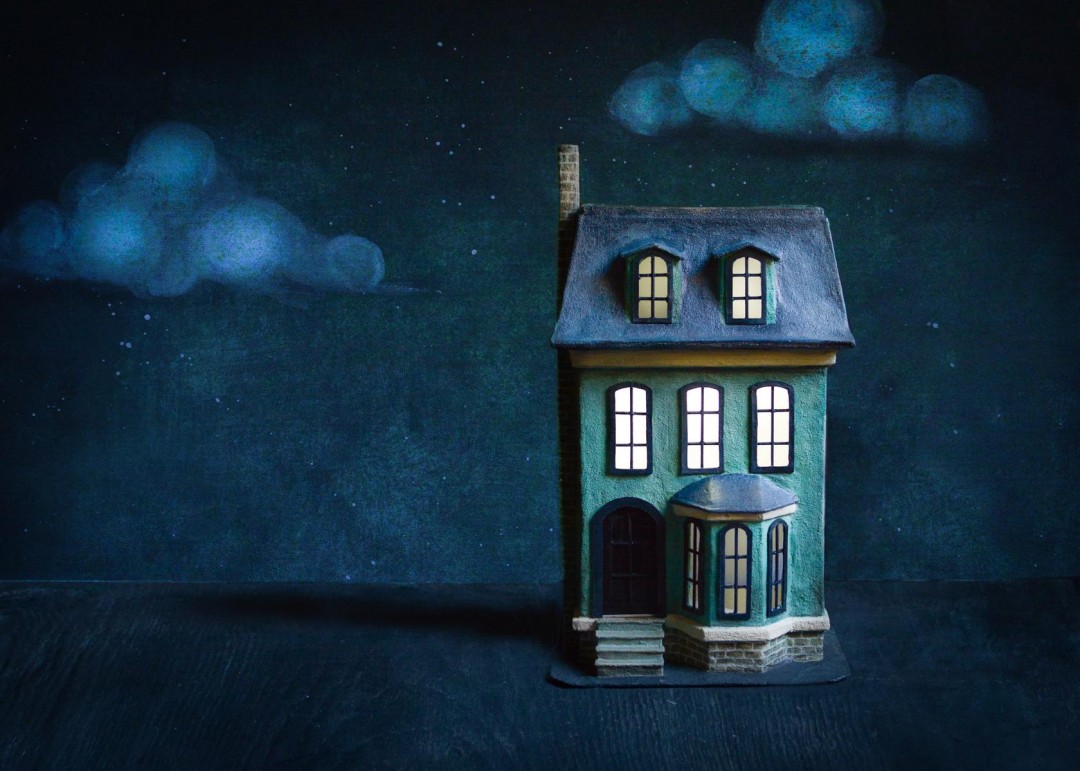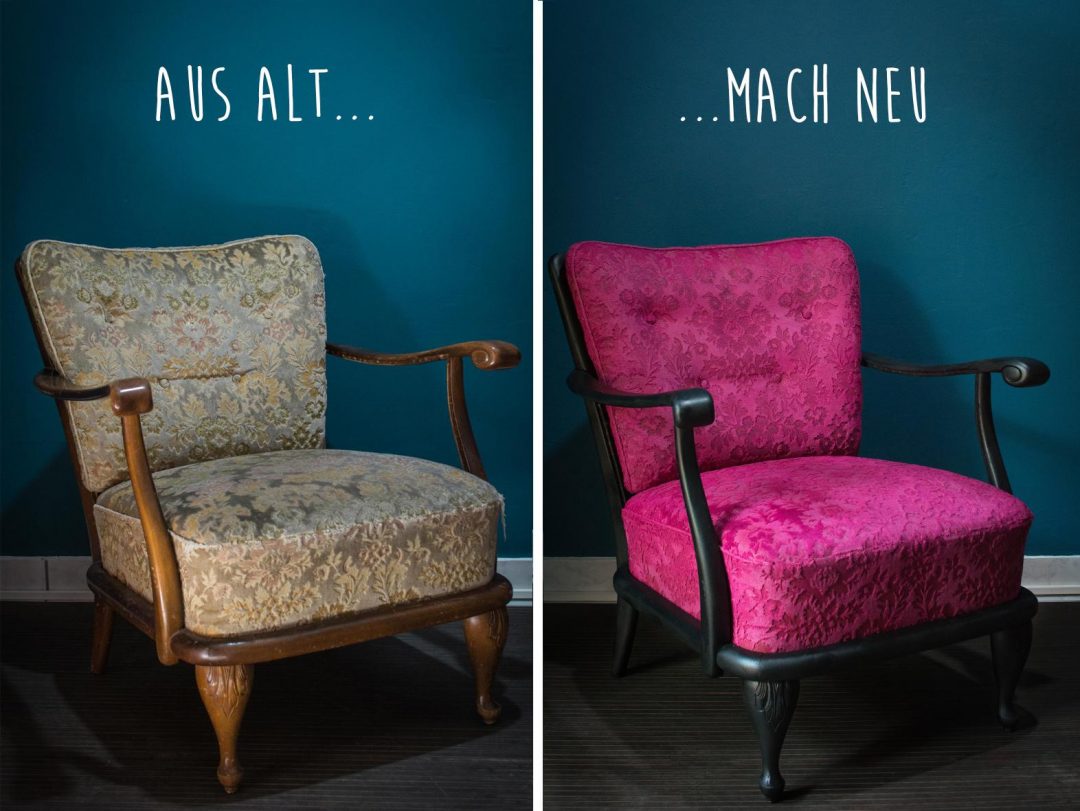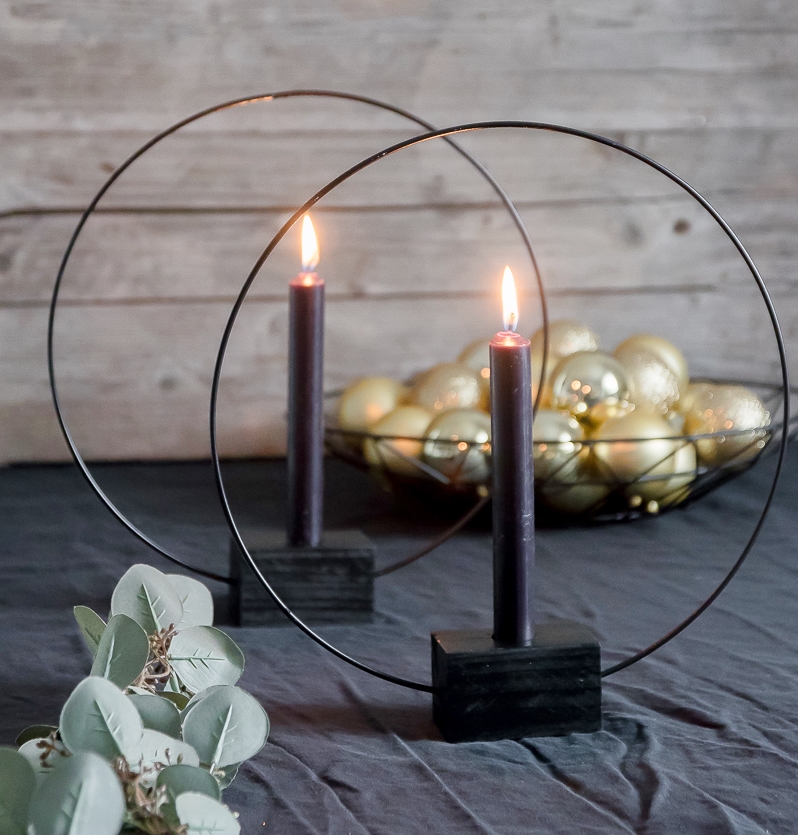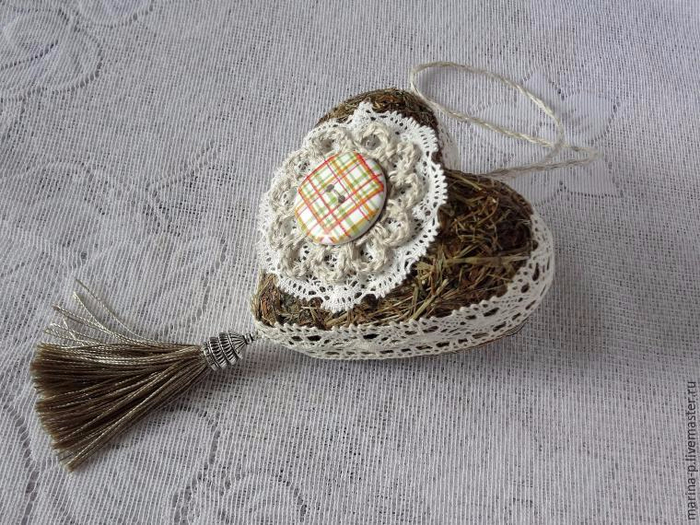-–убрики
- ЅјЋ≈“ (15)
- Ѕлокноты - ниги / переплЄт (9)
- бохо - boho (153)
- викторианские календари (22)
- ¬интаж / шебби шик /shabby chic (371)
- ¬ышивание (2)
- ¬€зание (58)
- √азета артон Ѕумага (94)
- грамматика русского €зыка (9)
- ƒекупаж (358)
- ƒругое (39)
- »нтерьер / ƒизайн / јрхитектура (77)
- каллиграфи€ (3)
- омпьютерное (53)
- оробочки (4)
- ружево / »рландское кружево (27)
- ћастер класс (550)
- мода / стиль (79)
- ћќ«ј» ј (7)
- ћои рукодели€ (10)
- ћыльное- осметическое (367)
- папье маше (3)
- ѕоддоны (1)
- ѕравка тела (81)
- ѕроволока (161)
- развитие детей (6)
- –ецепты (364)
- –исунки на камн€х (52)
- –одовое поместье (123)
- рукоделие (346)
- самообразование (265)
- свечи-подсвечники (21)
- —крап (58)
- —крап Ќаборы (5)
- —лав€нские праздники (55)
- 01 - январь - —лав€нские праздники (10)
- 02 - ‘евраль - —лав€нские праздники (6)
- 03 - ћарт - —лав€нские праздники (1)
- 04 - јпрель - —лав€нские праздники (1)
- 05 - ћай - —лав€нские праздники (2)
- 06 - »юнь - —лав€нские праздники (2)
- 07 - »юль - —лав€нские праздники (1)
- 08 - јвгуст - —лав€нские праздники (3)
- 09 - —ент€брь - —лав€нские праздники (2)
- 10 - ќкт€брь - —лав€нские праздники (1)
- 11 - Ќо€брь - —лав€нские праздники (4)
- 12 - ƒекабрь - —лав€нские праздники (14)
- соленое тесто (2)
- сутаж (6)
- —ыроедение (173)
- “очечна€ роспись (9)
- трапунто (4)
- ”чимс€ рисовать (59)
- ‘етр / ¬ойлок (58)
- холодный фарфор / полимерна€ глина / пасты (60)
- „истописание (24)
-¬идео

- ќбщество - нравственность - закон
- —мотрели: 3 (0)

- –ецепт окрошки от сыроедного ресторана
- —мотрели: 42 (2)

- ’во€ дл€ украшени€Е рациона!
- —мотрели: 196 (0)

- Altered book art, French Style
- —мотрели: 113 (0)
-ѕриложени€
 онвертер онвертер регистров
онвертер онвертер регистров ¬сегда под рукойаналогов нет ^_^
ѕозвол€ет вставить в профиль панель с произвольным Html-кодом. ћожно разместить там банеры, счетчики и прочее
¬сегда под рукойаналогов нет ^_^
ѕозвол€ет вставить в профиль панель с произвольным Html-кодом. ћожно разместить там банеры, счетчики и прочее я - фотографѕлагин дл€ публикации фотографий в дневнике пользовател€. ћинимальные системные требовани€: Internet Explorer 6, Fire Fox 1.5, Opera 9.5, Safari 3.1.1 со включенным JavaScript. ¬озможно это будет рабо
я - фотографѕлагин дл€ публикации фотографий в дневнике пользовател€. ћинимальные системные требовани€: Internet Explorer 6, Fire Fox 1.5, Opera 9.5, Safari 3.1.1 со включенным JavaScript. ¬озможно это будет рабо ƒешевые авиабилеты¬ыгодные цены, удобный поиск, без комиссии, 24 часа. Ѕронируй сейчас Ц плати потом!
ƒешевые авиабилеты¬ыгодные цены, удобный поиск, без комиссии, 24 часа. Ѕронируй сейчас Ц плати потом! ќнлайн-игра "Empire"ѕреврати свой маленький замок в могущественную крепость и стань правителем величайшего королевства в игре Goodgame Empire.
—трой свою собственную империю, расшир€й ее и защищай от других игроков. Ѕ
ќнлайн-игра "Empire"ѕреврати свой маленький замок в могущественную крепость и стань правителем величайшего королевства в игре Goodgame Empire.
—трой свою собственную империю, расшир€й ее и защищай от других игроков. Ѕ
-ѕоиск по дневнику
-ѕодписка по e-mail
-—татистика
ƒругие рубрики в этом дневнике: „истописание(24), холодный фарфор / полимерна€ глина / пасты(60), ‘етр / ¬ойлок(58), ”чимс€ рисовать(59), трапунто(4), “очечна€ роспись(9), —ыроедение(173), сутаж(6), соленое тесто(2), —лав€нские праздники(55), —крап Ќаборы(5), —крап (58), свечи-подсвечники(21), самообразование(265), рукоделие(346), –одовое поместье(123), –исунки на камн€х(52), –ецепты(364), развитие детей(6), ѕроволока(161), ѕравка тела(81), ѕоддоны(1), папье маше(3), ћыльное- осметическое(367), ћои рукодели€(10), ћќ«ј» ј(7), мода / стиль (79), ружево / »рландское кружево(27), оробочки(4), омпьютерное(53), каллиграфи€(3), »нтерьер / ƒизайн / јрхитектура(77), ƒругое(39), ƒекупаж(358), грамматика русского €зыка(9), √азета артон Ѕумага(94), ¬€зание(58), ¬ышивание(2), ¬интаж / шебби шик /shabby chic (371), викторианские календари(22), бохо - boho(153), Ѕлокноты - ниги / переплЄт(9), ЅјЋ≈“(15)
DIY Ц Aufbügelbild selber machen |
|
Nachhaltigkeit im Kinderzimmer Ц Spielzeug-Orca DIY |
|
Nachhaltigkeit im Kinderzimmer Ц Puppenhaus DIY |
|
Die (vor)letzte Rettung Ц Neuer Anstrich für alte Polster |
|
Die (vor)letzte Rettung Ц Neuer Anstrich für alte Polster |

28. Juni 2016
Dieser Artikel enthält Affiliate Links
Wenn ein heißgeliebtes Möbelstück irgendwann so abgelebt ist, dass es kurz vorm tragischen Sperrmüll-Tod steht, lohnt es sich manchmal, über die Möglichkeit einer unkonventionellen Rettung nachzudenken.
Vor einigen Jahren verliebten wir uns bei Ebay-Kleinanzeigen in zwei Chippendale-Sessel aus den 1960ern. Sie waren günstig abzugeben – im Zuge einer Bordellauflösung.
In Ermangelung eines eigenen Autos transportierten wir die beiden stark parfümierten Schmuckstücke damals mit der S-Bahn nach Hause und schlossen sie sofort ins Herz. Die erste Zeit standen die Sessel gemeinsam mit einem kleinen Tisch im Wohnzimmer. Doch irgendwann trennten wir sie und einer kam in die Küche.
Ein Sessel in der Küche ist unglaublich toll! Als Rückzugsort zum Lesen und als perfekter Platz, um nach dem Aufstehen den ersten Kaffee des Tages zu genießen.
Leider muss so ein Sessel in der Küche aber auch viel ertragen. Umgekippten Kakao zum Beispiel. Oder kletternde Kleinkinder, die ihre Chance wittern, auf dem Weg über die Armlehne auf die Arbeitsplatte und an die Kekse zu gelangen.
So kam es, dass zunächst das Flechtwerk an den Armlehnen riss, bis wir es komplett entfernen mussten. Dadurch ging viel Stabilität verloren und immer mal wieder flog die ein oder andere Armlehne ab. Außerdem waren Sitz-und Rückenpolster völlig abgelebt. Ein Knopf war weg, der Stoff wurde immer dünner und begann an einigen Stellen schon zu reißen.
Natürlich hätte man den Sessel einem Polsterer anvertrauen können, der ihn mit viel Zeit und Liebe zum Detail wieder in einen passablen Zustand hätte bringen können. Die letzte Rettung sozusagen…
Aber das hätte unser Budget dann doch mehr als gesprengt und so entschieden wir uns für eine andere Möglichkeit: die vorletzte Rettung.
Der alte Sessel sollte einen neuen Anstrich bekommen.
Als Malerin und Illustratorin habe ich schon so einige Dinge bemalt: Papier, Leinwand, Glas, Holz, Wände – und immer mal wieder aus Versehen: Textilien. Ich arbeite seit vielen Jahren mit Acrylfarben und kann eins aus Erfahrung sagen:
Acrylfarbe auf Stoff hält – und zwar für immer.
Man muss diese Farbe auch nicht bügeln, um sie zu fixieren. Sie haftet wie Kaugummi und denkt gar nicht daran, sich jemals wieder von irgendetwas zu lösen (Deshalb übrigens auch der hübsche Kittel…).
Ich empfehle allerdings trotzdem, die Acrylfarbe für so ein Projekt mit einem Textilmedium zu mischen. Sie lässt sich dann einfacher auftragen und ist nach dem Trocknen etwas geschmeidiger.
Generell müsst ihr wissen, dass sich auch der samtigste Polsterstoff nach so einer Behandlung nicht mehr weich und kuschelig anfühlen wird, sondern eher ledern.
Überlegt euch also gut, welchem Möbelstück ihr so eine Behandlung zukommen lasst. Die Entscheidung lässt sich nicht umkehren!

Polstermöbel streichen – So geht’s!
Nehmt euch für so ein Projekt zwei bis drei Tage Zeit. Das Bemalen des Polsterstoffs selbst dauert nicht lang. Aber euer Möbelstück muss selbstverständlich von allen Seiten gut durchtrocknen.
Folgende Materialien werden benötigt:
Acrylfarbe (für unseren Sessel waren das ca. 500ml) z.B. Liquitex Basics Acrylfarbe, 400 ml, Quinacridone Magenta
*
Textilmedium (hier ebenfalls 500ml) z.B. Liquitex 126804 Professional Acryl-Textilmedium, 118 ml
*
eine Sprühflasche mit Wasser
ein breiter Pinsel

Mischt die Farbe im Verhältnis 1:1 mit dem Textilmedium. (Am Ende sollten keine weißen Streifen mehr zu sehen sein!)
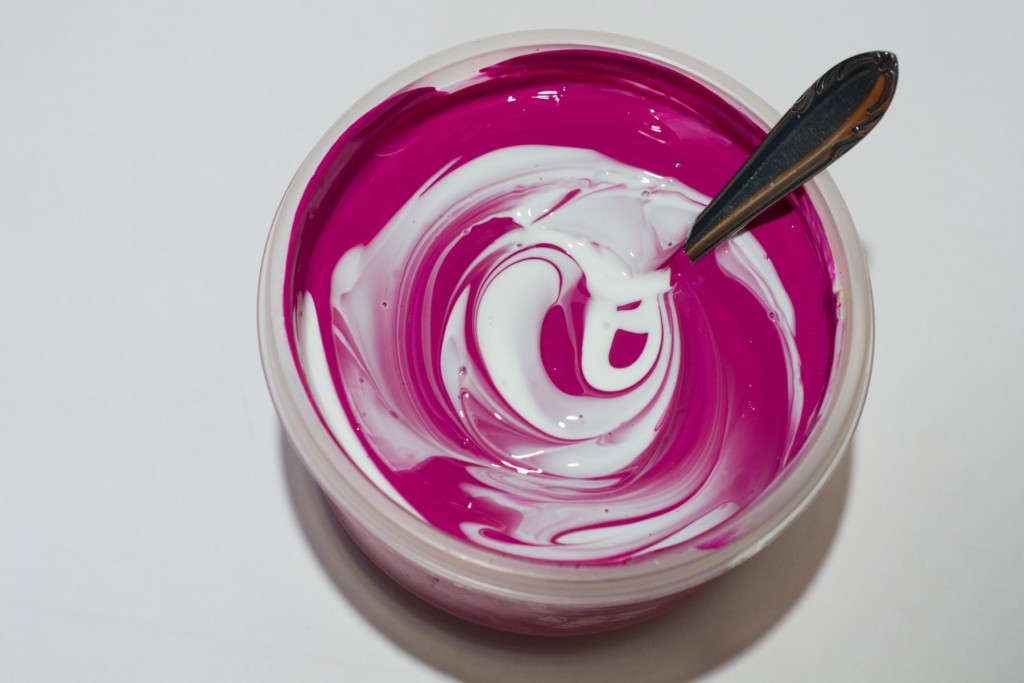 Besprüht den Stoff erst mit Wasser und streicht dann mit der Farbe darüber. Wann immer ihr das Gefühl habt, dass die Acylfarbe nicht richtig ins Gewebe reinläuft, könnt ihr noch etwas Wasser nachsprühen.
Besprüht den Stoff erst mit Wasser und streicht dann mit der Farbe darüber. Wann immer ihr das Gefühl habt, dass die Acylfarbe nicht richtig ins Gewebe reinläuft, könnt ihr noch etwas Wasser nachsprühen.
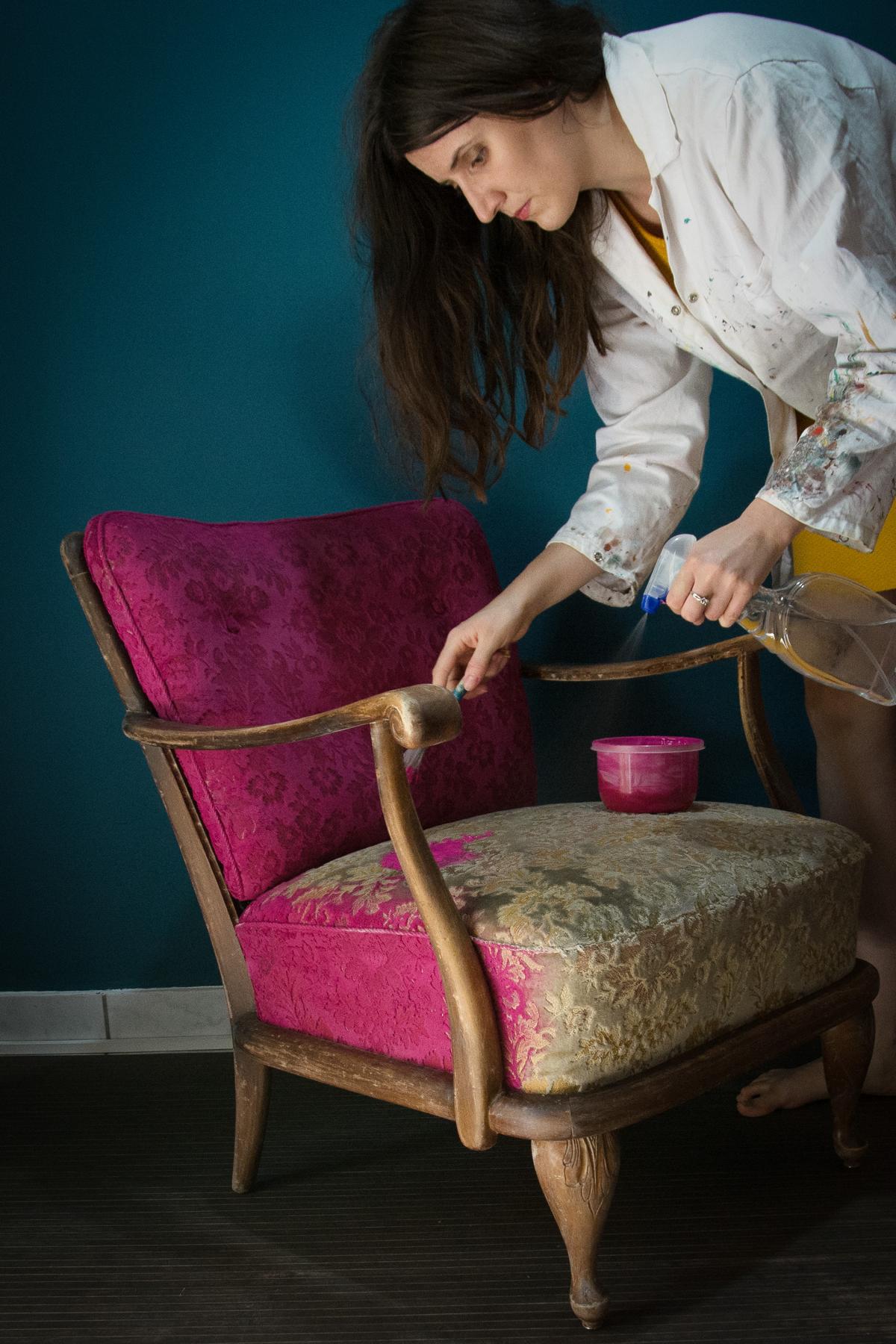 Unser Sessel bekam nicht nur an den gepolsterten Teilen einen neuen Anstrich. Auch die Holzteile sollten am Ende in neuem Glanz erstrahlen. Dafür habe ich das Holz etwas angeschliffen und anschließend mit schwarzer Sprühfarbe bearbeitet.
Unser Sessel bekam nicht nur an den gepolsterten Teilen einen neuen Anstrich. Auch die Holzteile sollten am Ende in neuem Glanz erstrahlen. Dafür habe ich das Holz etwas angeschliffen und anschließend mit schwarzer Sprühfarbe bearbeitet.

Et voilà: Das ist er, der alte Sessel mit neuem Anstrich.
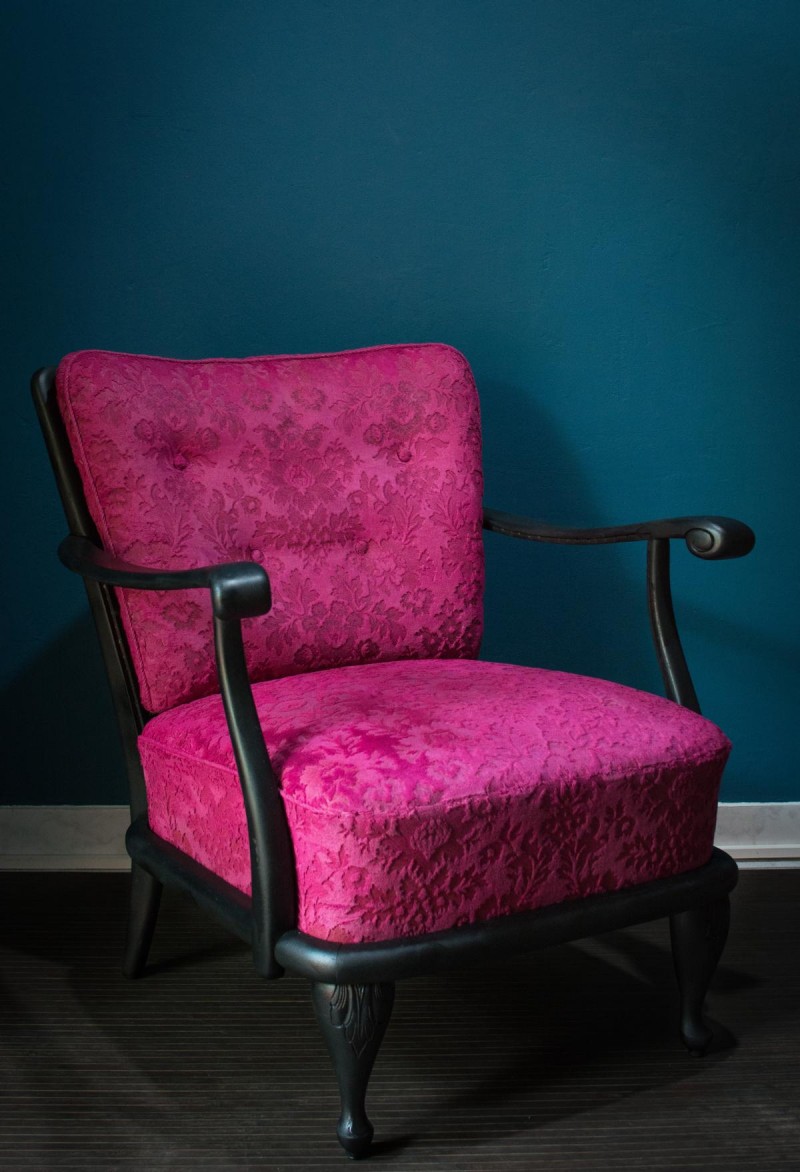
* Affiliate-Link. Mit einem Klick auf diesen Link erhalte ich beim Verkauf eine kleine Provision. Dadurch könnt ihr meine Arbeit auf artandalmonds.com unterstützen. Für euch ändert sich dadurch nichts am Preis des Produkts.
Wie hat euch dieses Polster-Anstrich DIY gefallen? Sind vielleicht noch Fragen offen geblieben? Schreibt eure Meinung in die Kommentare – und damit ihr nie wieder was verpasst, folgt mir einfach auf Facebook, Instagram oder Twitter!
|
DIY Kerzenhalter RING |
ћетки: ћастер класс подсвечник своими руками рукоделие |
Fantastik Plastik |

Eigentlich ist Plastik ja gar nicht immer so fantastik. Im Pazifik treibt ein (Plastik-)Müllteppich in der Größe von Texas, das ist etwa 900x die Fläche von Hamburg in Müll!! Da wird selbst Oskar übel.
Nachdem wir nun ja schon alle unsere Plastiktüten bügeln und die ganze Familie mit kleinen Basteleien aus den Ergebnissen beglücken, wenden wir uns heute mal anderen Plastikverpackungen zu.
|
DIY PROJECT:GLASS-JAR MOROCCAN LANTERNS |
|
ѕроцитировано 1 раз
Schöne Vase aus Beton einfach selber gießen |
|
ѕроцитировано 1 раз
ћастер-класс: корзинки из сосновых иголокЕ |
ƒневник |
орзинки из сосновых иголок - плетение из них можно назвать увлекательным зан€тием. Ёкологические материалы, при своем многообразии, на столько доступны, что всегда возникает иде€ сотворить из них что-либо полезное и красивое одновременно. »зготавливать практичные элементы дл€ домашнего декорировани€ можно из чего угодно. ѕредметы, созданные из эко-материалов будут всегда актуальны и смогут украсить любой интерьер. ¬се без исключени€ знают о разнообразных свойствах сосны. ќна и кормит, и одевает, а что и говорить о ее целебных свойствах. »спользуетс€ все: корни, шишки, ветки, хвою, почки. азалось бы, человек примен€ет себе на пользу все, что только можно было. Ќо нет. ¬ данной статье пойдет речь о применении хвойных иголок в плетении всевозможных элементов декора. » подробнее остановимс€ на таких вот замечательных корзинках...
орзинки из сосновых иголок

ћетки: ћастер-класс корзинки плетение плетение корзин |
¬алентина —ухова. ћ. . —екреты работы с трансферными гел€ми, особенности патинировани€ и приЄмы работы с трафаретами |
Ёто цитата сообщени€ ќльга-¬ [ѕрочитать целиком + ¬ свой цитатник или сообщество!]
|
—ельский стиль. ѕодставка дл€ ног |
Ёто цитата сообщени€ Katra_I [ѕрочитать целиком + ¬ свой цитатник или сообщество!]
Ќо ведь клево выгл€дит, а?
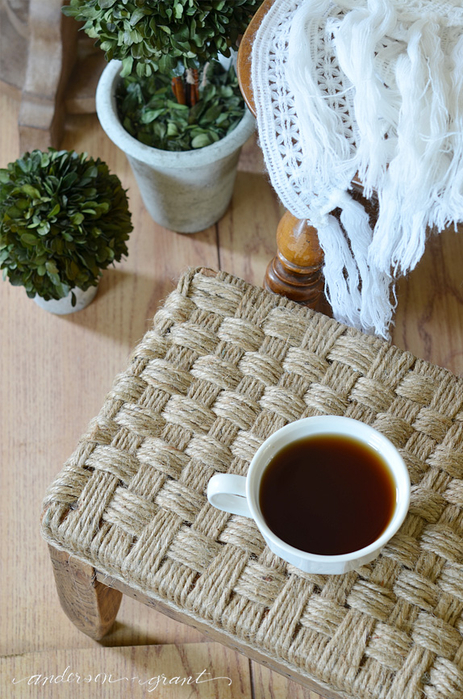
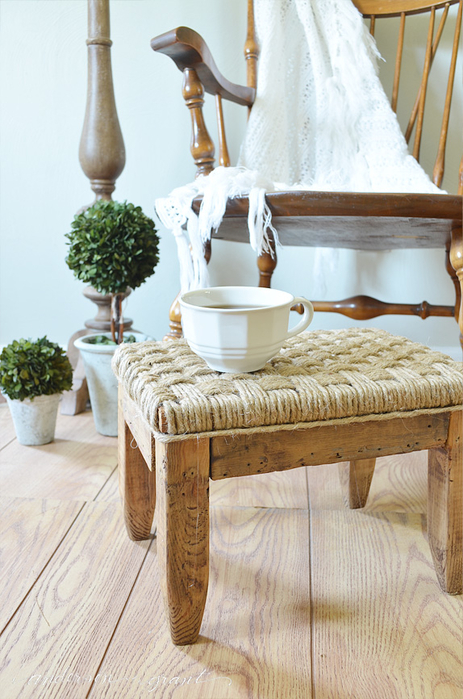
|
ƒекор свадебных туфелек (и не только свадебных) |
Ёто цитата сообщени€ Donnarossa [ѕрочитать целиком + ¬ свой цитатник или сообщество!]

|
ћ. . Ѕюро и фолиант Ђѕадший ангелї. »митаци€ чеканки и техника Ђсицилийского кружеваї |
Ёто цитата сообщени€ ќльга-¬ [ѕрочитать целиком + ¬ свой цитатник или сообщество!]
јвтор »рина “рофимова
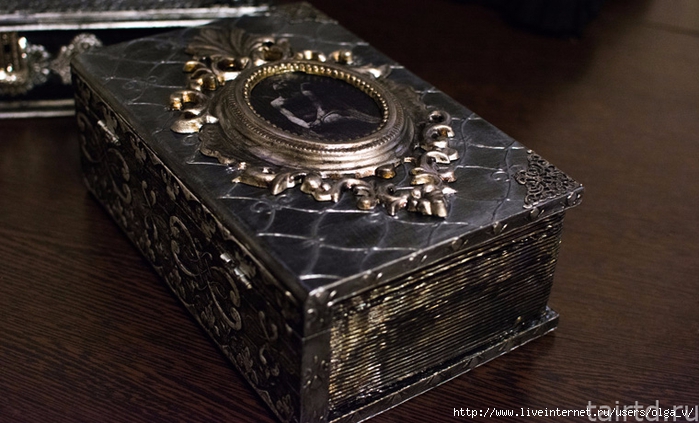
јвтор: ¬ этом мастер-классе мы параллельно будем делать бюро и фолиант из одной серии «ѕадший ангел», использу€ несколько разных техник: морение древесины, «сицилийское кружево», имитаци€ чеканки, вживление распечатки, работа с рельефной пастой.
ћастер-класс большой и очень подробный.
¬ результате получатс€ несколько оригинальных предметов интерьера в строго выдержанной стилистике.
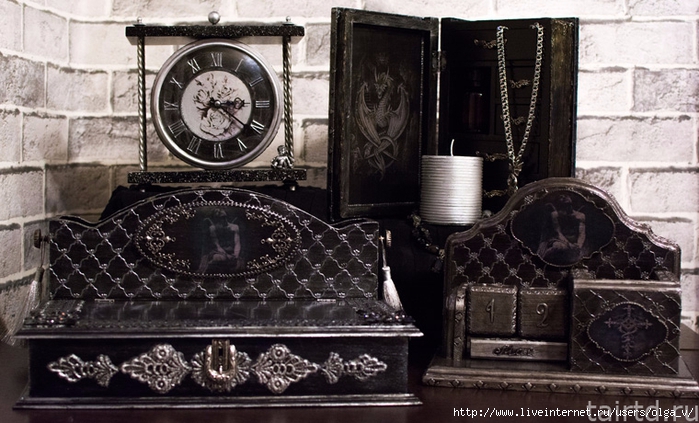

|
ќбъемное сердечко из сена или сухой травы. ћастер-класс |
Ёто цитата сообщени€ ћарриэтта [ѕрочитать целиком + ¬ свой цитатник или сообщество!]
|
ћастер-класс: делаем меловые доски своими руками |

ћода на так называемые «chalkboards» - меловые (грифельные) доски - в самом разгаре. ¬месте с дизайнером “ать€ной ойданов сделаем грифельную краску и пустим ее в дело - пофантазируем «на тему»!;-)

ћетки: ћастер-класс меловые доски |
ѕроцитировано 1 раз
ћастер-класс: создаем декоративную посуду в технике паперклей! |

—егодн€ месте с участницей нашего клуба @Alexandra Yare (јлександрой яремченко) мы познакомимс€ с очень интересным материалом дл€ творчества, который называетс€ паперклей (от англ. paper clay) или бумажна€ глина.
"Ёто неверо€тно интересна€ скульптурна€ (а в нашем случае, гончарна€ ) масса, которую можно использовать дл€ создани€ множества художественных объектов.
¬ысыхает на воздухе, после высыхани€ становитс€ легкой, твердой и очень прочной… ƒа что говорить? Ћучше один раз увидеть! :-)

ћетки: ћастер-класс декоративна€ посуда ѕапье-маше бумага |
ѕроцитировано 20 раз
DIY Mad Hatter Tea Table Ц Fun! - ћастер класс |

This Mad Hatter Tea Table project is whimsical and a wee bit zany!
The creative team at Heirloom Traditions Paint has sponsored this post, because yep, they’re awesome!
If you’d like to follow me down this rabbit hole, you’re gonna need some stuff!
Supplies:
- Heirloom Traditions Ultra Guard Primer & Sealer
- Heirloom Traditions Chalk Type Paint: Rainy Day
- Heirloom Traditions Chalk Type Paint: Black Bean
- Heirloom Traditions Chalk Type Paint: Nickel
- A Best Chalk Brush
- Heirloom Traditions Soft or Spray Wax: Clear
- Heirloom Traditions Soft or Spray Wax: Jet Black
- Heirloom Traditions 1Gel Transfer & Decoupage Medium
- A ratty chip brush for creating shadows
- A regular synthetic bristle brush for highlighting
- A generous amount of bold patterned paper. (I got my harlequin wrapping paper at Hobby Lobby)
- Pretty vintage style scrapbook paper (I used a sheet from the 12 x12 Tim Holtz Idea-Ology Wallflower Paper Stash)
- Scissors
- A brayer really helps to smooth the decoupaged paper
- 400 grit sandpaper
- Clean rags for buffing the soft wax (not needed for spray wax)
- Damp rags for distressing
- A work surface that can take a few drips of paint
- A playful attitude!
How-to:
When she came to me, this charming little tea table had good lines, functional pull-out trays and lovely scallop medallions – but the tabletop had been badly abused.
(Too many mad tea parties, one supposes…)
The veneer had bubbled and was quite marred. Goodness knows what she’s been through!
I felt an instant affinity for her. Something about her feminine lines, coupled with signs of active use seemed, well, familiar.
Those of us of a certain age can perhaps relate…
After a quick but strenuous session with a hot iron, some parchment paper and an electric sander, the damage had been brought under control.
If only I could work this same magic on MY veneer…
- A quick coat of Ultra Guard was in order, to seal in the tannins and stain prior to painting.
That’s better…a creamy foundation makes our makeover so much smoother!
2. Once the primer has dried (about an hour) a single coat of Heirloom Traditions Rainy Day Chalk Type Paint creates an excellent basis for our whimsical finish.
Such a pretty gray!
Note: for best results, allow the paint to cure overnight prior to applying waxes and distressing.
3. The first layer of Clear Soft Wax is applied to the entire surface with a Best Chalk Brush.
4. Use clean lint-free rags to wipe back the Clear Soft Wax.
Note: If you use Spray Wax, no wiping back is required!
5. Next, a layer of Jet Black Soft Wax is applied to all the nooks and crannies.
6. Wipe back with a clean rag to bring out the lovely qualities of this beautiful wax:
7. Now it’s time to embellish! Cut a piece of patterned paper large enough to cover your tabletop.
8. Apply a generous coat of 1Gel to the surface of the wood, and carefully adhere the paper.
A brayer really helps to get any wrinkles and/or bubbles out.
Note: A spicy vocabulary can facilitate the process, as well.
The 1Gel dries very quickly – I was able to begin distressing the surface of the paper within the hour.
9. A few swipes with sandpaper, and the surface of the slick paper now begins to show signs of wear:
10. To add depth to the finish, Heirloom Traditions Chalk Type Paint in Black Bean, thinned just a bit with water is haphazardly applied with a chip brush…
11. Then wiped back with damp absorbent toweling, leaving a soft layer of shadowing ‘round the edges of the top.
12. Decoupage pretty scrapbook paper to the surface of the pull-out trays, using 1Gel.
13. Sand the paper lightly when dry, to age.
14. Add Jet Black Soft Wax to soften the transition at the edges.
15. When dry, coat with 1Gel to seal and protect.
16. Add detail areas of the bold patterned paper on the trays and on vertical surfaces, to create cohesion in your design:
17. Distress the ‘wear points’ with 400 grit sandpaper, if desired, to expose layers of primer:
She had no knobs when she came to me, but Hobby Lobby had just the right thing.
These little clear glass floral knobs subtly echo the scallop shape of the medallions, unifying the design further:
18. Add a casual ombre effect to the legs by simply painting the feet with thinned Black Bean Chalk Type Paint, and feathering your application upward.
19. Apply Black Bean full strength to just the feet when this layer had dried, leaving a gradually lightening effect from the base to mid-leg.
20. Stipple Black Bean anywhere you wish to create the impression of shadow.
21. Keep a moist rag handy, and alternate between painting pigment on, and wiping it back to get a feathered effect.
22. For this admittedly over-the-top look, keep working the areas of shadow and light until an almost cartoon effect takes shape.
23. Messy stippling with a ratty chip brush gives a slightly deranged over-emphasis to the shadowing, and accentuates the playful mood:
24. Retouch the areas you want to emphasize with a lighter shade.
Here, Heirloom Traditions Nickel Chalk Type Paint has been used to gently highlight areas of interest.
25. Add highlights, then soften with a fingertip:
26. Once the paint has thoroughly cured, apply Jet Black Wax over the darkened areas and buff to a sheen.
27. Finally, apply a coat of 1Gel over the entire piece to seal and protect.
It dries so quickly, you’ll be sipping your well-earned cuppa within the hour!
The perfect place to sit with a good book and cup of tea…
This piece has just enough silliness to make me smile every time I catch a glimpse…
I love the combination of pretty florals with bold black and white:
For more information on Heirloom Traditions Products, please visit www.heirloomtraditionspaint.com
* Full Disclosure: Heirloom Traditions supplied their products to be used in this project, and they sponsored this post – however, I supplied the elbow grease, rescued furniture, design concept, and silliness! All of which reflect my own point of view, regardless of affiliation…
Thank you for visiting The Graphics Fairy today!
Hope you’ve enjoyed this little excursion into zaniness. It was such a fun process creating this Mad Hatter Tea Table…I can’t wait to add humor and whimsy to another furniture project!
Break out your own favorite papers and experiment with playfully embellishing your next reclaimed piece of furniture: it’s sure to make you smile.
If you appreciate a bit of nonsense from time-to-time, stop by Thicketworks to see what all the mayhem is about!
Heather
ћетки: ћастер класс |
ѕроцитировано 2 раз
—тарому шкафчику - новое "платье". |
Ёто цитата сообщени€ Ќата-та-таха [ѕрочитать целиком + ¬ свой цитатник или сообщество!]
я вернулась из очередного отпуска и, конечно же, не с пустыми руками. ѕредставл€ю свою новую работу. Ќа этот раз реставрировала старенький дачный бельевой шкафчик.
—обственно объект переделки не представл€л собой какой-либо серьезной ценности. ѕростенький представитель старой (не старинной) мебели, изготовлен из самых дешевых материалов, сосновых планок и листов фанеры, но вполне еще крепок и функционален, хот€ и лишен из€щества. ƒавно уже точила на него зуб, да все как-то руки не доходили. Ќо вот, наконец, решила вз€тьс€ за дело. онечно же, покопалась в сети, посмотрела, как тут избы делаютс€ шкафчики реставрируютс€. ѕредставила себе, что бы мне хотелось получить в итоге. » прин€лась за дело.
ƒалее отчет о проделанной работе. ѕошагово
|
“очечна€ роспись новогодних подвесок. ћастер-класс от Ќатальи рюковой |
Ёто цитата сообщени€ √лебова_≈лена [ѕрочитать целиком + ¬ свой цитатник или сообщество!]
Ќовогодн€€ точечна€ роспись. ћастер-класс
ѕриветствую вас!
Ћюди, занимающимс€ рукоделием, наход€тс€ в более выгодном положении по сравнению со всеми остальными, особенно во врем€ всевозможных праздников - им не составл€ет труда создавать и оригинальный декор дл€ дома, и необычные подарки дл€ своих друзей и близких. » чем больше видов рукодели€ освоено человеком, тем интереснее получаютс€ создаваемые им вещи, личные наработки позвол€ют уже комбинировать техники и материалы.
“очечна€ роспись - универсальный вид рукодели€, позвол€ющий быстро добавить изюминку любой работе, ее часто используют не только в самосто€тельном исполнении, но и дл€ завершающих штрихов в декупаже, скрапбукинге и т.д. Ѕолее того, сам процесс создани€ узоров из точек необыкновенно увлекает и зат€гивает:)
“алантлива€ мастерица Ќаталь€ рюкова подготовила дл€ нас с вами преотличнейший мастер-класс по росписи в технике point-to-point новогодних подвесок. я уверена, что он поможет тем, кто еще не знаком с этой техникой, освоить ее легко и быстро. ѕри€тного просмотра и удачного новогоднего творчества!
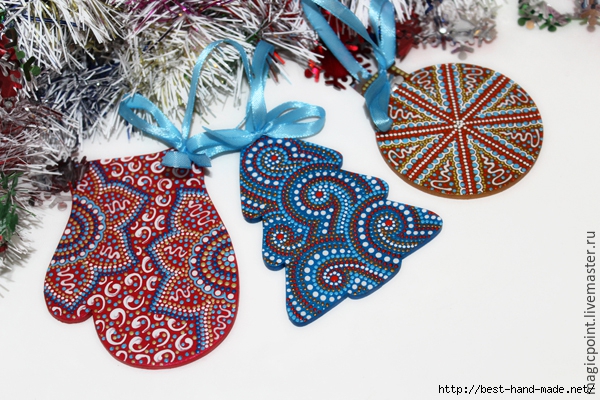
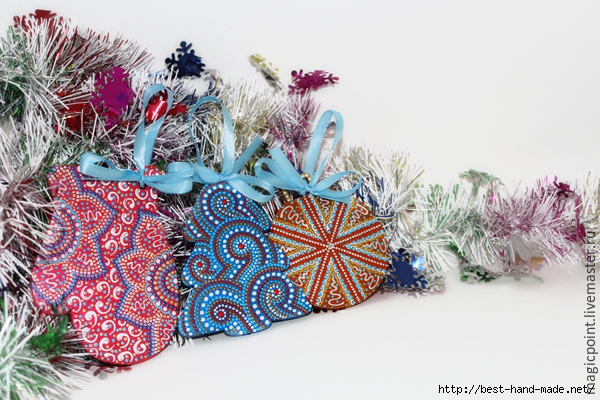
„то может быть при€тнее и ценнее того подарка, который сделан своими руками? ¬едь в него вложена душа, добрые мысли и тепло дар€щего! ј получить новогодний подарок, сделанный своими руками, при€тнее вдвойне, так как Ќовый √од — праздник добрый и волшебный! ќдним из таких чудесных подарков может стать набор новогодних подвесок, расписанных в технике точечной росписи.
ќсвоить эту прекрасную технику сможет каждый, дл€ этого совсем не об€зательно обладать специальными художественными навыками, главное — это терпение и усидчивость, ну и, конечно же, ¬аше желание!
|













